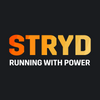Advantages of Running by Power

We’ve discussed some of the great benefits of running by power: you don’t need a relatively unreliable GPS, and your power responds much faster than heart rate. And even with headwind and uphill terrain you can continue to run by power. Power training provides peace of mind and you can train specifically for a PR.
Are there any disadvantages to training by power?
We often hear from runners who are used to training with a heart rate monitor that the monitor can be a necessary break for people with a lot of stress. After all, stress at work or after an illness makes your heart rate go up, so if you train on heart rate, you should naturally run more slowly in times of stress. Also, for avid runners who overtrain, the heart rate monitor can be a remedy if the heart rate no longer rises during intensive training.
Does this happen with running by power?
No. Stryd’s power meter determines your Critical Power based on your workouts. Training older than 90 days doesn’t count towards your Critical Power. That is to say: progress is directly included in your new values, but illness or overtraining is only compensated after 90 days.
Example.
Imagine you run a very fast 10 kilometers in March. You participate in an event and you give it everything you’ve got. You cross the line exhausted. Red faced. Heavy legs. Nice PR. The following week is rough. Your partner wants to leave you and a colleague is sick, so you’re working twice as hard. You just had a hernia surgery. Life is full of heartbreak and stress. If you keep running and only train with Stryd, things can go wrong. Running is a welcome distraction, but your body does not recover as well as you’re used to during this difficult period. If you continue to train on your abilities and you train just as often as before all the setbacks, then things are bound to go wrong. After all, your Stryd will take your top time from March into your Critical Power and your zones for another 90 days. The fact that you are gradually performing less is only taken into account in June (90 days after March).
Incidentally, Stryd does monitor your training sessions to check whether you are training constructively, or whether you may be doing unnoticed damage. Stryd indicates this by means of the Running Stress Balance.
What’s your Running Stress Balance?
A handy trick from Stryd that we will discuss here is your Running Stress Balance (RSB). Your RSB indicates the difference between your activities of the last 7 days versus the 42 days before. This way, you can see in 1 number whether you’re improving, or whether you could use some rest.
If your RSB is -40 or lower, it’s good to take a few rest days. If you’re between -25 and -40, you should be careful. Extra rest works better than an intensive workout. You’re training constructively when you’re between -10 and -25. It’s good to be in between these two points during training periods, and to take some rest days in the run-up to a match. Between -10 and 5 you’ll maintain the condition you have, so if you’re training and want to get better, you should put on your running shoes more often (or run more intensively). If you have consciously taken some rest because an important event is coming up, this is fine. Because between 5 and 25 is the perfect RSB to be at, at the start of your event where you want to run a PR (after a training period between -10 and -25). If you’re between 25 and 45, then you need a push to get off the couch and start running again.
However, this Running Stress Balance is only related to your training, and doesn’t know when you’re feeling ill or stressed. So, that remains a pitfall of running by power.
This disadvantage of running by power is easy to fix. You can train by power and heart rate. Power controls your training. When training, you only have to pay attention to your power, but in Stryd’s PowerCenter or on Strava (or another app where you analyze your workouts) you can check whether your heart rate is keeping up. When you are in good shape, your heart rate will drop over time at a certain wattage. Your body has become stronger (and your Critical Power improved). You deliver more power at fewer revs (heart beats). Hans and Ron go so far as to keep a graph of all training sessions for themselves in Excel. Such a graph is very educational and will help you avoid unpleasant surprises.
Resting heart rate
Another way to check whether you are recovering sufficiently from your workouts is your resting heart rate. Your resting heart rate is a value that you can measure on a daily basis.
It’s the heartbeat you have when you sit quietly on the couch. Whether you measure resting heart rate in the morning or in the evening doesn’t matter, as long as you do it at the same time. Make sure that you sit for at least 5 minutes, because your heart rate increases just from standing. In any case, it’s very educational to measure your resting heart rate for a period of time. You’ll gain insight into your recovery in relation to work, sleep, alcohol, jet lag, and training. Is your heart rate five beats higher than you’re used to? Then it’s time to rest (even if you actually had an intensive interval in mind).
HEART RATE VARIABILITY
More and more heart rate monitors are also showing heart rate variability. That’s even more reliable than your resting heart rate. Your heart rate variability is the time difference between two consecutive heartbeats.
Are you training in a constructive way and are you recovering well? Then your heart rate variability increases. Contrary to popular belief, it’s unhealthy if your heart beats evenly. During your inhalation, your heart rate increases a little and, when you exhale, your heart rate decreases. This is related to two different systems in your autonomic nervous system: your orthosympathetic system and your parasympathetic system.
Your orthosympathetic system is your so-called accelerator and stands for action, high heart rate, the upper number of your blood pressure, and rapid breathing. Your parasympathetic system is the recovery, the brake pedal of your body. Your parasympathetic system stands for rest, recovery, low heart rate, the lower number of your blood pressure, and calm relaxed breathing. In times of stress and a lot of work or training, your orthosympathetic system can take the upper hand and even remain active in your sleep. By measuring your heart rate variability, you can keep an eye on this and you can build in rest and take more time for relaxation exercises when needed.
Feeling
We love measuring and making progress transparent. But of course, there are also ways of knowing if you’re making progress without using measurements. If you feel fit and full of energy, you’re fine. Do you dread your running workouts and feel tired and lethargic? Then it is time to rest and listen to your body. Tip: do run, even if you are tired and lethargic. After fifteen minutes of running you’ll know whether it’s okay to go back home, or whether it’s better to keep running to get more energy. Do you still feel tired after running for 15 minutes? Then it’s time to rest. But it may well be that you’re surprisingly more ready after fifteen minutes of running than when you just stepped out of the door. Then it’s fine to finish your workout.
Summarizing, the disadvantage of running by power is that you can’t measure fatigue in your body with a power meter. But, power meters are great for measuring progress. That’s why we’ll now go to Part II: How can you run faster?
In summary
Power is the amount of energy per second that is required to propel your body in a certain direction at a certain speed. GPS is not reliable over short distances.
Air resistance is also included in your performance. Air resistance depends on, among other things, temperature, wind speed, air pressure, and height above sea level. Your Critical Power can be used as a surrogate near your tipping point, or anaerobic threshold. Every training is included, so your Critical Power automatically remains accurate.
With the Power Duration Curve you have insight into what you can do at specific distances.

Want to learn more about Running Power?
Download The Fastest Way To Your Next Personal Best: Running Power eBook (with over 65+ pages of content) for free to learn simple ways you can use power to improve your running performance.
Click here to download. Enjoy the book!

